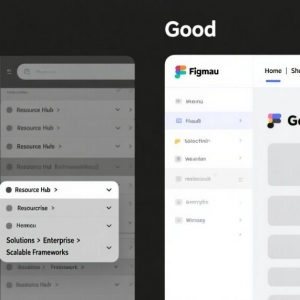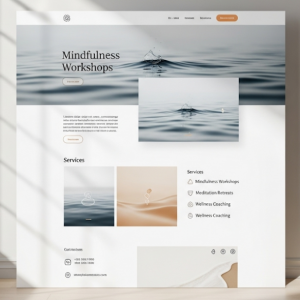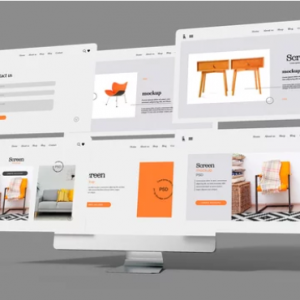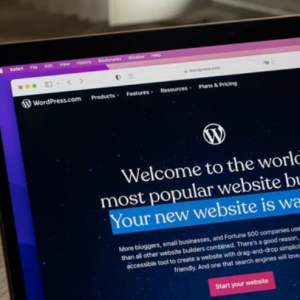Shoppers aren’t tethered to desktops anymore. They’re on phones—swiping on commutes, at home, or in queues. That’s mobile commerce. If your online store doesn’t shine on mobile, it’s practically invisible.
Mobile commerce (m-commerce) isn’t just about a site that fits a phone screen. It’s about designing a shopping journey that feels natural on mobile, from browsing to payment. This isn’t optional—it’s the norm. Bad design means lost revenue.
If you’re launching or tweaking an e-commerce site, here’s what to focus on.
Speed: The Ultimate Must-Have
A slow mobile site kills sales. No matter how amazing your products or visuals, users will leave if pages take too long to load.
Speed comes from smart development. Optimize images. Streamline scripts. Skip heavy animations—they often hurt more than they help.
When discussing web design services, ask: “What’s your plan to make this site fast on mobile?” A capable web designer, whether in Singapore or elsewhere, will explain their approach clearly, not just offer vague assurances.
A fast site doesn’t just satisfy users—it boosts your bottom line.
Mobile Isn’t a Downsized Desktop
Taking a desktop site and shrinking it for phones isn’t enough. That’s not design—it’s a half-measure. Mobile users behave differently. They tap, not click. They often use one hand. They’re multitasking. Every part—navigation, buttons, filters—needs to be built for these habits.
Buttons must be easy to tap. Text should be clear without zooming. Menus need to be straightforward. Hover effects don’t work on touchscreens. A skilled web designer knows mobile is its own world, not a smaller desktop.
Keep It Simple and Clear
Don’t overload your homepage. Pop-ups, ads, and chat widgets on a small screen? They annoy users and slow things down.
On mobile, less is more. One focus per page. One clear action per screen. Make the path to purchase direct and uncluttered.
Ask: Can a user buy something quickly? If not, fix that first.
Prioritize Tapping Over Typing
Typing on a phone is frustrating. Long checkout forms scare users away. Simplify checkout. Allow guest checkouts. Use autofill for addresses and payments. Offer mobile wallets like Apple Pay, Google Pay, or PayNow. Easier checkouts drive sales.
Small details help: numeric keyboards for phone numbers, email keyboards for emails. Enable card scanning over manual input. Save secure logins when appropriate. Tapping beats typing every time.
Build for Thumb Navigation
Most users browse with one thumb, limiting their reach on the screen. Place key buttons—Add to Cart, Buy Now, Continue—where thumbs can hit them easily. Avoid top edges or corners for critical actions.
This tweak boosts usability. Reachable buttons get more taps. Test it: navigate your site one-handed on a phone. Note what’s tricky. Adjust it.
Make Navigation Effortless
Mobile screens have limited space. Don’t hide links or make menus complex. Use standard icons, like a top-left hamburger menu or bottom navigation bar. Avoid experimental layouts unless they’re clearly better.
Prioritize search. Many shoppers know what they want—make the search bar prominent, fast, and smart. If navigation isn’t intuitive in seconds, your design’s off.
Display Trust Visibly
Mobile shoppers are skeptical. A site that feels unpolished can make them pause, especially at checkout.
Show trust signals clearly: secure payment badges, return policies, contact info, and reviews. Make them easy to read—no fine print or buried links.
Highlight real reviews if you have them. Show site security. Don’t make users question their safety. Good design builds trust, and trust closes sales.
Maintain a Cohesive Look
Your site should feel seamless from homepage to checkout. Don’t change fonts, colors, or layouts between pages. A unified design reassures users. They know where they are and what’s next, paving the way to a sale.
Inconsistent design feels amateurish and risky. On mobile, where trust is crucial, that’s a dealbreaker.
Test on Real Phones
Many sites go live without real mobile testing. Simulators aren’t enough—shop your site like a customer.
Try it on a slow connection. Use an older phone. Go through checkout. Switch tabs mid-flow. Fix problems before customers hit them.
Don’t stop testing after launch. Devices and browsers change—your site must keep pace.
Quiz Your Web Designer
When hiring web design services, don’t just focus on visuals. Ask how they’ll make your site fast, user-friendly, and thumb-accessible on mobile.
In Southeast Asia, a web designer in Singapore often gets local preferences—payment methods, shopping habits, mobile-first culture—better than far-off providers.
Wherever they’re from, your Singapore web designer must prioritize mobile as the main event, not a side note.
The Final Word
Your online store is a shop in your customer’s hand. If it’s fast, intuitive, and thumb-friendly, you’re set. If it’s slow, messy, or hard to navigate, you’re losing sales every day.
Mobile commerce is about function over flash. Create a clear, reliable experience that makes buying effortless. If your site falls short, it’s time to rebuild with mobile at the heart.











